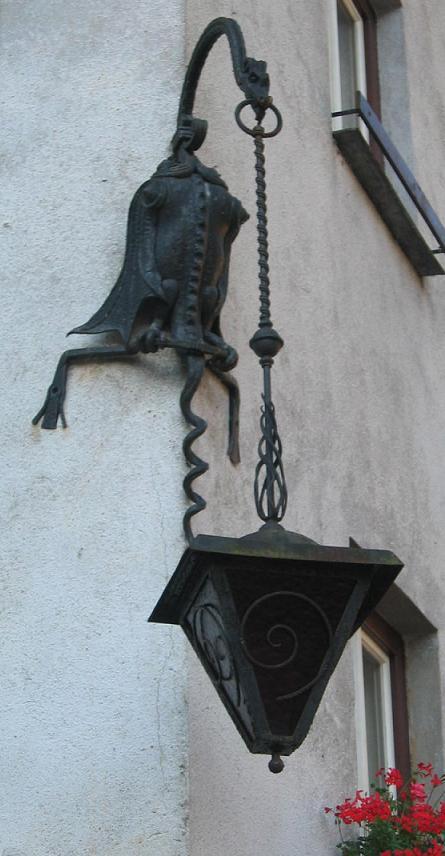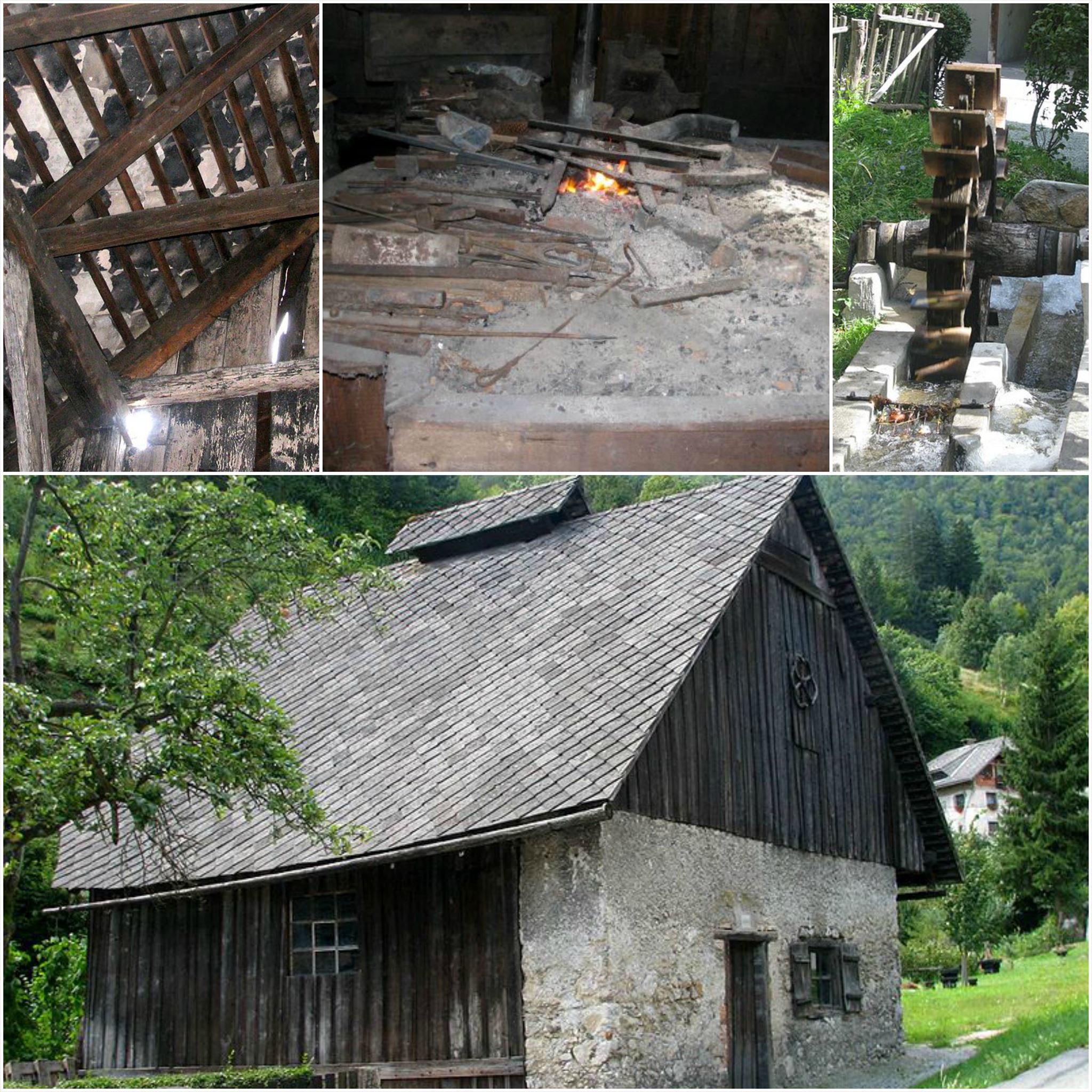SLO:
Kropa slovi po tradicionalni železarski in kovaški dejavnosti.
Skozi naselje teče potok Kroparica, ki se izliva v potok Lipnica. Kroparica ima amfiteatrsko povirje z močnim kraškim izvirom. Hudourniški značaj Kroparice je tudi etimološko jedro imena naselja in potoka: na odseku svojega toka skozi naselje se v deževnih obdobjih peni kakor »krop« (vrela voda).
Kropa se je razvila, ker so bili tu na voljo vodna energija, lesno oglje in železova ruda na Jelovici. Železarstvo, živo vse od keltske dobe, je konec prejšnjega stoletja, zaradi razvoja sodobnejše črne metalurgije, zamrlo. Industrija (tovarna Plamen) je po letu 1945 izpodrinila tudi ročno žebljarstvo. Prebivalci so zaposleni še v umetnostni kovaški obrti.
Zgodovino kroparskega železarstva in fužinarstva lahko spoznamo v Kovaškem muzeju, ki se nahaja v Klinarjevi hiši (Kropa 10) (N 46°17,406' E 14°12,219' ), zgrajeni v 17. stoletju.
Tehničnozgodovinski razvoj obdelave železa od rude do žeblja, gospodarske, socialne, demografske in kulturne razmere v naselju in sosednjih železarskih krajih od 15. stoletja do propada fužin v 19. in razvoj ročnega žebljarstva v 20. stoletju prikazuje Kovaški muzej.
V njem so posebne muzejske zbirke, tudi umetniško kovani železni izdelki mojstra Jožeta Bertonclja.
Sicer pa so ročno izdelani kovaški predmeti v naselju zelo prisotni. Najbolj so opazne raznolike ulične svetilke, pa tudi železni zmaj, opasani kamen itd.

Med kovaškim muzejem in mestom zaklada sta še dve zanimivosti.
Prva je mala kovačija – vigenjc Vice, ki je v Sloveniji edina v celoti ohranjena kovačnica za ročno kovanje žebljev.
Tu so ročno izdelovali predvsem žeblje. Te so kovali v deloma kamnitih, deloma lesenih stavbah ob vodnem toku s kolesom za pogon mehov – vigenjcih. V preteklosti je bilo v Kropi veliko vigenjcev, v celoti pa se je ohranil le vigenjc Vice. Vigenjci so stali ob rečici Kroparica, tako da so lahko uporabljali vodni pogon za kovaške mehove, norce (mehanska kladiva) ...
V vigenjcu je delala in čez dan živela celotna družina, pri kovanju so pomagali žena in otroci.
Kovačnica je včasih odprta, in lahko tudi samu izdelate kakšen žebelj.

Še malo višje pa se srečamo s srednjeveškim plavžem, ki je najstarejša ohranjena talilna peč v Sloveniji in se nahaja v Dnu nad Kropo. Talilnico železa iz 14. stoletja varuje zidana stavba, a pogled skozi veliki zamreženi odprtini razkrije dobro viden jašek ene najstarejših ohranjenih peči v Evropi.
Visoka je bila tri metre in je v desetih urah dala 200 kg železa za kovanje, t.i. volka. Zanj so porabili 600 do 800 kg oglja. Proizvodnja je bila namenjena porabi posameznika ali njegove bližnje okolice. Delovala je do sredine 15. stoletja, ko so nekateri železarji začeli izkoriščati vodno energijo in so se talilni obrati preselili nižje v dolino. Nastale so fužine.
Več na: Slovenska peč v Kropi
Vir: wikipedia, burger.si
ENG:
Kropa is famous for its iron furnace and blacksmith history.
It lies along the spring Kroparica.
There is an Iron Forging Museum in Kropa (N 46°17,406' E 14°12,219' ). The themes of the museum cover the technical and historical development of iron-working from the iron ore to a nail, the commercial, social, demographic and cultural circumstances of the settlement and in the neighbouring sites of the 15th century to the close of the iron foundry tradition in the 19th century, and the development of hand made nails in the 20th century.
The museum also features a special collection of artistically forged iron objects, made by master blacksmith Joža Bertoncelj. The Slovenian furnace, a technical monument from the 13th century, is located nearby.
Metalworking has an ancient tradition in Kropa with evidence of metalworks from Celtic times in the wider area and the earliest furnaces actually in Kropa from the 14th century onwards. You can see many products along with the settlement – street lights, fences, and decorations are all made in Kropa.

Between the museum and place of cache, there are two more things to see – a small blacksmith workshop Vigenjc Vice Blacksmiths Museum, which is sometimes open and you can make your own nails (under supervision, of course). Vigenjc - a spike forge is a wooden building near water current with a wheel for propelling bellows. For centuries Kropa blacksmiths, men, women and children were forging various spikes at the fireplaces (called Jelša) and behind anvils from early in the morning till night.
A spike forge "Vice" ("Purgatory") is the only preserved forge for manual spike forging. It is situated on a flat area on the left bank of the stream below the dam of the former Upper foundry. It was still used for forging in the first half of the 20th century. Now it is a museum.

Few hundred meters up, at 'Dno nad Kropo', you can find Slovenian smelting furnace for smelting iron from the 14 th century. It is the oldest monument of its kind in Slovenia.
It was three metres high and in ten hours it produced 200 kg of iron for forging, the so-called volk (wolf). 600 to 800 kg of charcoal were used for that. The production was intended for individual use or for their close surrounding. It was in operation until the middle of the 15 th century, when ironworkers started to utilise water energy and smelting plants were moved lower down the valley. Foundries were started.
Source: wikipedia, burger.si